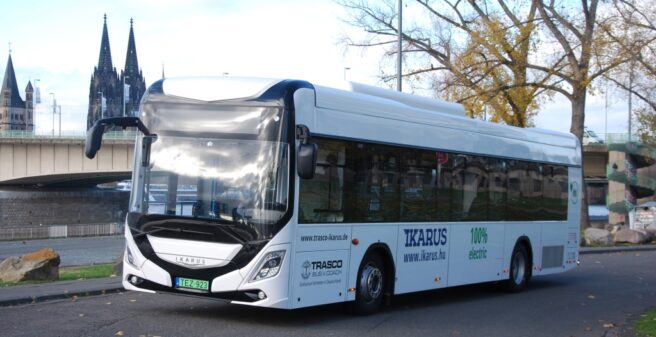
On 22 November 2022, “Trasco GmbH” from Bremen, the exclusive sales partner of the renowned bus manufacturer Ikarus, offered the opportunity to get to know the bus better on a test drive with the “Ikarus 120 e”. Trasco is responsible for the German-speaking countries of Germany, Austria, Switzerland and Luxembourg – although Luxembourg is actually more French-speaking in the south and west of the country. Ikarus is – since the fall of communism – again rather unknown on the German market, but that is by no means to remain so. – Urban-transport-magazine was happy to take the opportunity to test drive the Ikarus 120 e.
The bus manufacturer Ikarus is anything but unknown – from the times before the “Wende”. The company was founded in Budapest in 1895. After the Second World War, Ikarus advanced to become the bus manufacturer in the former “Eastern Bloc”. True to the old maxim that larger numbers reduce production costs, the “Council for Mutual Economic Assistance” (CMEA) concentrated the construction of large buses in Hungary at Ikarus. With an annual production of around 15,000 buses, Ikarus became the third largest bus manufacturer in the world, and for a time it was even number one.
The “Wende” in the former “Eastern Bloc” brought Ikarus into serious difficulties. The previous sales markets collapsed, and customers now wanted Western technology. And Ikarus did not succeed in opening up new markets in the West. 17 low-floor articulated buses of the type 417 together with a few midibuses of the type 405, which all went to the Wuppertaler Stadtwerke WSW, did not bring the hoped-for breakthrough. An Ikarus 405 was also tested by Essener Verkehrs AG.
In 1999, the “International VEhicles COrporation” (IVECO), a subsidiary of the Fiat group based in Amsterdam, took over Ikarus. But even under IVECO’s leadership, Ikarus failed to succeed. Therefore, in 2007 the last Ikarus for the time being left the factory halls, Iveco “turned off the lights”.
But already in 2010 there was a new start with new owners. Today, the majority of Ikarus is owned by the Hungarian industrialist Gabor Szeles. But the Chinese CRRC (China Railroad Rolling stock Company) is also involved. In 2016, the development of the fully electric, 12-metre-long Ikarus low-floor bus began, the first units were delivered to Germany again at the end of 2021. For example, the Ikarus 120 e is running at Meininger Bus Betrieben (MBB).
We reported in detail about Ikarus on 6 December 2021: https://www.urban-transport-magazine.com/en/ikarus-120e-the-electric-rebirth-of-a-well-known-brand
Live test of the bus
The test round started at the motorway exit of the A 59 in the Troisdorf district of Spich. The Ikarus 120 e came from Saarland that morning, and this motorway exit was a good place to meet. The journey then continued along the A 59 into the big city traffic in the Cologne district of Deutz – where Nikolaus Otto invented the Otto engine (petrol internal combustion engine) named after him. From Deutz station we went to the banks of the Rhine at the foot of Deutz Bridge. Here the electric bus was photographed – and that has to be done – against the backdrop of Cologne Cathedral and the beautiful Romanesque church “Groß Sankt Martin”.
The journey continued over the Severinsbrücke bridge onto the left bank of the Rhine, to the Bonntor interchange and via the A 555 to Bonn. The A 555 is Germany’s oldest motorway, dating back to 1929. We reached Bonn via the A 555, and here we headed for the Central Bus Station (ZOB) at the main railway station. The Ikarus among all the other buses attracted a lot of attention … We then continued over a long uphill stretch to the Venusberg district. This route is served by lines 632 and 634 of Bonn’s SWB, on which electric buses are in regular use. The Ikarus proved to performe very well here, especially compared to other buses operating on the route.
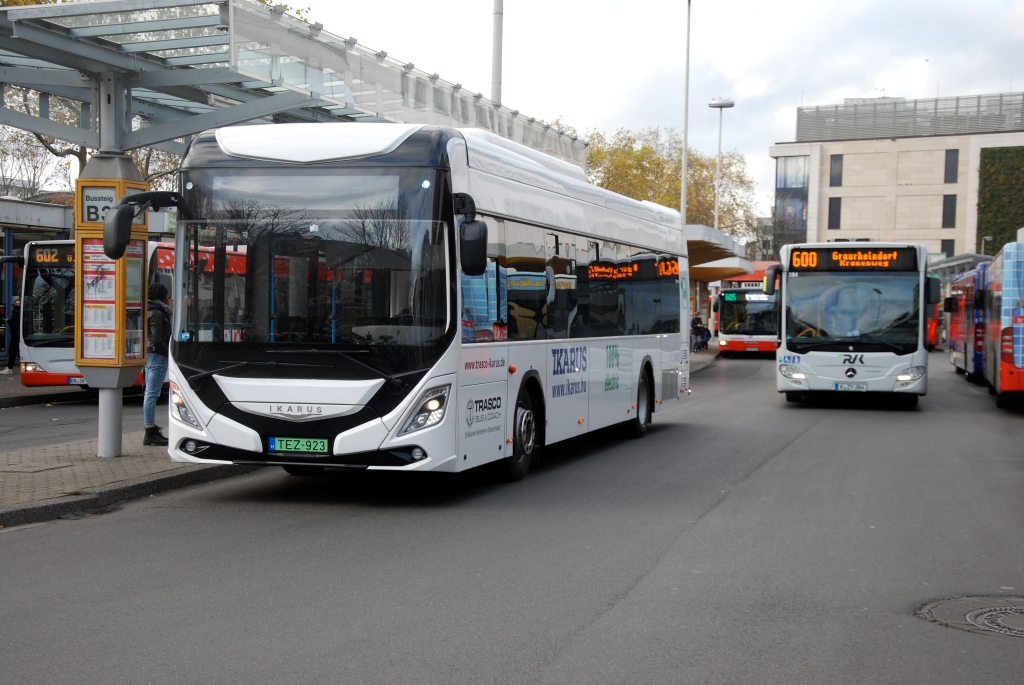
On the hill we changed to the district of Ippendorf, and from there downhill back to the Rhine valley in the district of Poppelsdorf via a two-kilometre downhill section with a gradient of 6%. Here, too, the performance in comparison with SWB’s own electric buses was convincing.
Finally, the tour went through the city and neighbouring villages onwards to Troisdorf-Spich. Since the greater Bonn area is completely urbanised here, we were able to see a longer section with intense city traffic.
Overall impression
On the two motorway sections – A 59 to Cologne-Deutz and A 555 between Cologne and Bonn – the Ikarus 120 e was on the road at its top speed of 75 km/h. It could go faster, but Ikarus has deliberately “locked” it at 75 km/h. For a city bus, that’s perfectly fine; in the city, the opportunities to drive faster will be rather rare, and as a city car, it will hardly ever get on the motorway anyway. When you sit in the vehicle, you get a completely different impression: with a city bus, 75 km/h on the motorway is definitely considered fast. The Ikarus runs smoothly and keeps to its lane without the driver having to intervene with steering corrections. Bumps in the road are easily “ironed out” by the air suspension.
In the city (Cologne-Deutz), the Ikarus 120 e is well integrated into the rest of the traffic. It is quick on the road and also accelerates quickly. No other road user has to complain that the Ikarus is too “slow” and obstructs traffic.
The bus could demonstrate that it is easy to manoeuvre. For one thing, we drove a “U-turn” on Siegburger Straße: turning around 180 degrees on the same road in the opposite direction. No problem for the Ikarus, it completed the turn without reversing. So the turning circle is as it should be in city traffic.
For the photos at the foot of the Deutz Bridge, we brought the bus into position by moving it forwards and backwards on the two-lane von-Gablenz-Straße. But here, too, the Ikarus 120 e was a willing participant.
In Bonn, on the way to the Central Bus Station, we passed the north subway at the main station, which was built in 1937 and still has coarse cobblestones as its road surface. Will the Ikarus make its passengers feel the cobblestones? But no! The air suspension, see above, smoothes out the bumps.
The two “mountain stretches” in Bonn were very interesting: about 100 metres of ascent from the Rhine valley to and from the heights above the city centre. From the Kessenich district we went via Marienhospital to the Venusberg, and from the Ippendorf district down the Kreuzberg to the Poppelsdorf district. Both routes are served by electric buses in the normal service of the Stadtwerke Bonn (SWB), to Venusberg by lines 632 and 634, Kreuzberg by line 602. The Ikarus did the incline up the Venusberg very quickly and without any problem..
What remained was the return to the Rhine valley down the Kreuzberg. The gradient is 6 % and is about two kilometres long. Exciting question: does the Ikarus 120 e recuperate on the downhill gradient, does it recover power? The answer is an unqualified yes. Arriving at the bottom of Poppelsdorf, the corresponding display on the dashboard showed that one percent more electricity was stored in the batteries than when we left at the top of Ippendorf.
At the end of the test drive, we can see: Overall performance of the Ikarus 120 e is very good.
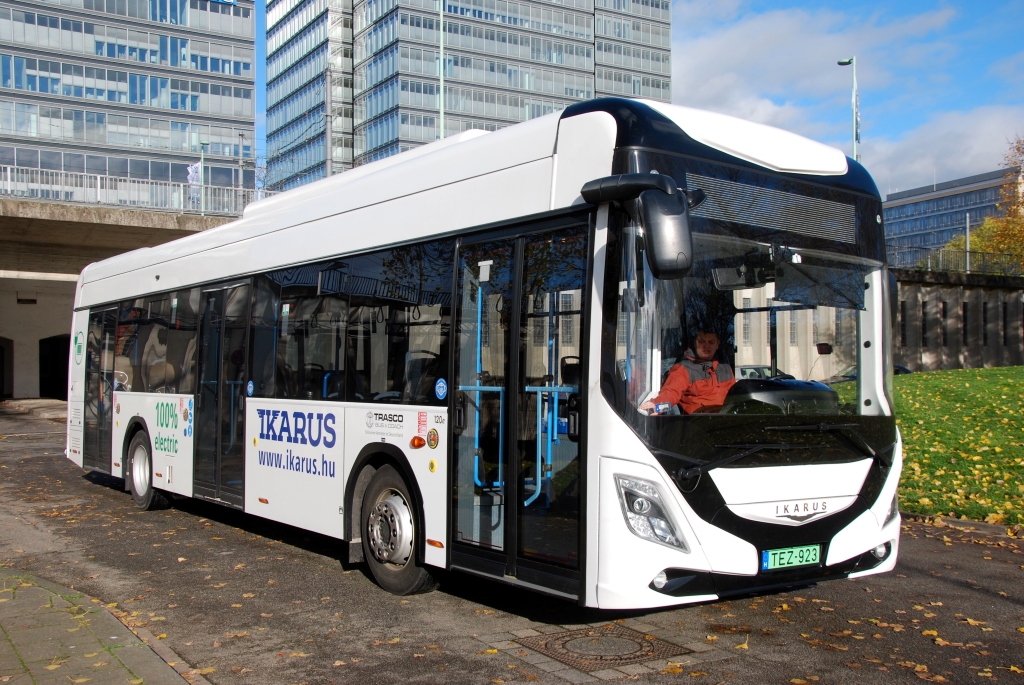

The Ikarus 120 e as a two-door model
So far, the Ikarus 120 e has only been available as a three-door model with a length of exactly 12,000 mm. But Ikarus will expand its portfolio of electric buses. The two-door version of the 120 e is expected to be presented in December 2022. Interestingly, this is 20 centimetres longer than the three-door version, i.e. it measures 12,200 mm. Ikarus emphasises that the car has more seats as a two-door version, which is also demanded by numerous prospective buyers. Nevertheless, the three-door version will still be in demand because transport companies are increasingly buying three-door buses as solo vehicles and four-door buses as articulated buses.
Ikarus also wants to expand its electric bus range to include a version with a length of 9 metres and an articulated car. The engineers are working on that.
Technical data:
City bus made of stainless steel
anti-rust-through guarantee
Fire protection system “Fogmaker” fitted as standard
Length: 12,000 mm
Width: 2,550 mm
Height: 3,270 mm
Wheelbase: 5,820 mm
Turning circle: 22,050 mm
Entry height: 340 mm
with kneeling reducible to 250 mm
Passenger capacity: 28 seats, 2 folding seats
Front axle: ZF RL 82 A (portal axle)
with level control and ECAS air suspension
Rear axle: ZF AV 133 (portal axle) with level control and air suspension (4 air bellows)
Level control: electrically controlled, with kneeling
Steering: electro-hydraulic power steering EHPS
Braking system: Knorr
Electric motor: CRRC
Type: TZ 400 XS 021
Liquid-cooled permanent magnet synchronous motor installed as central motor directly behind the rear axle
Power: 165 kW, on request also with 240 kW
Batteries:
Manufacturer: CATL
Capacity: 313.14 kWh
Type: 579.60
Voltage 600 volts
Six battery packs on the roof, four in the rear
Total weight of the battery packs: 2,200 kg
Cell chemistry: LiFePo (lithium-iron-polonium)
Battery management system (BMS) for control and monitoring
Range: at least 350 km (according to Sort III – SORT = Standardised On Road Test)
smallest replaceable unit: one cell (cell voltage 116 volts)
maximum charging power: 120 kW
Battery warranty: 8 years
recuperation during braking and driving downhill
Air conditioning:
Manufacturer: VALEO
with heat pump
Heating:
Manufacturer: Konvekta
electric, with heat pump
on request with additional fossil heating (increases the range of the car)
on request with double glazing (increases thermal insulation)
Charging connection (right-hand side wall at the very rear): CCS 2 combo plug
Tara: 12,660 kg
Total gross vehicle weight: 18,600 kg
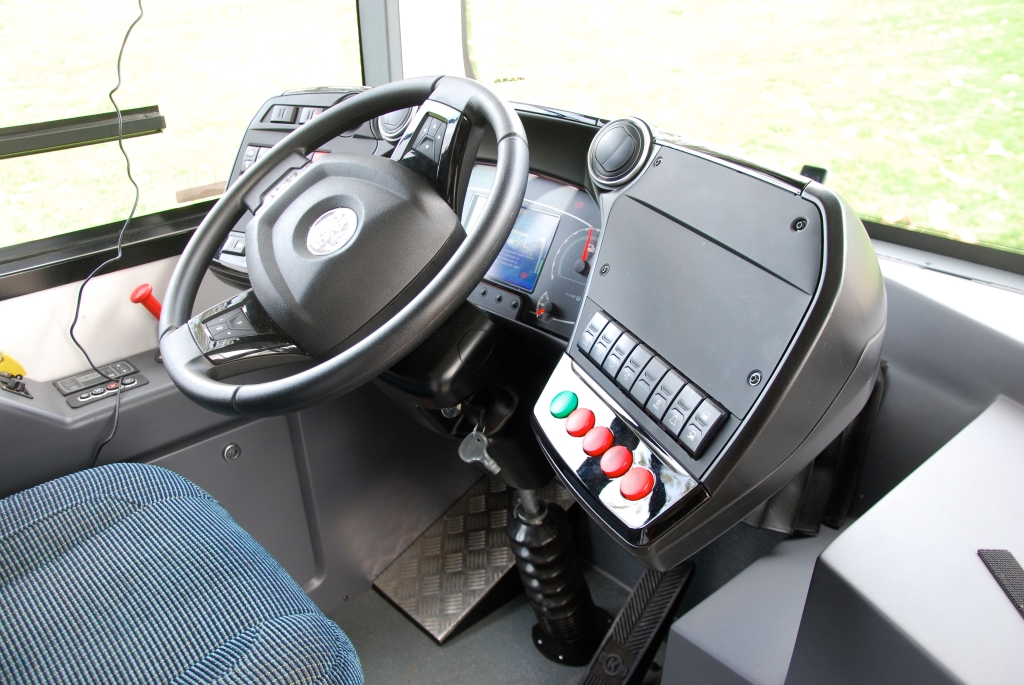
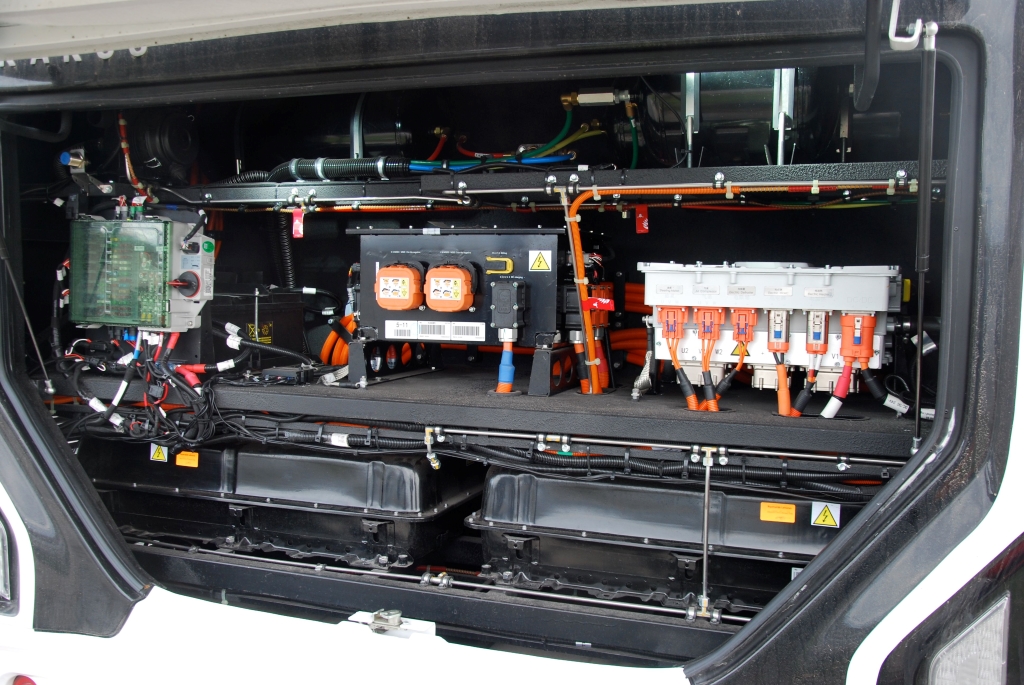
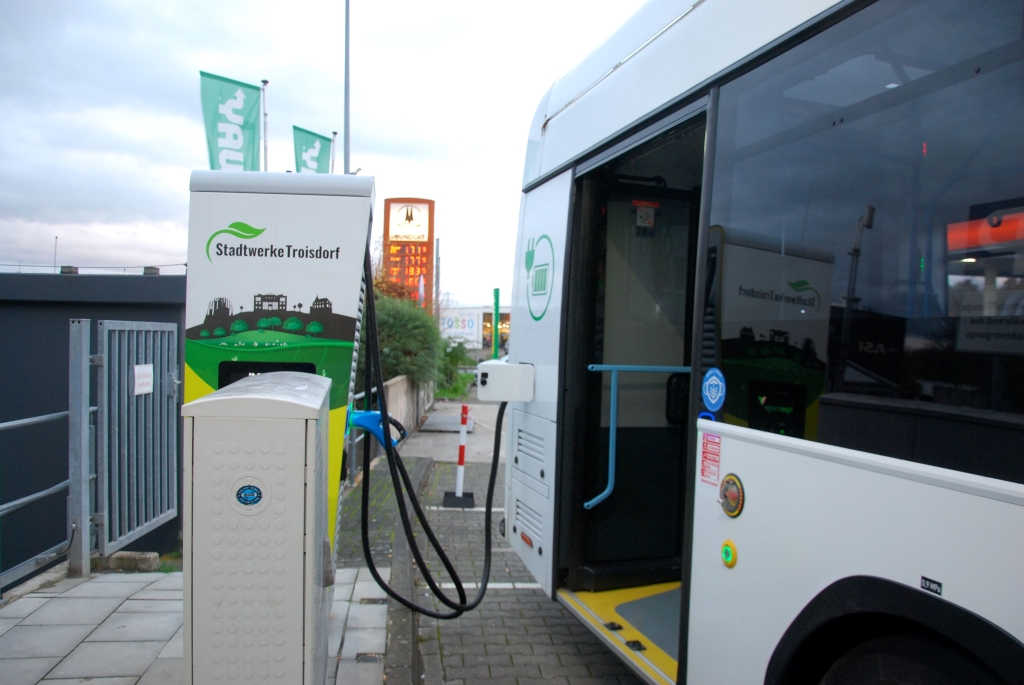
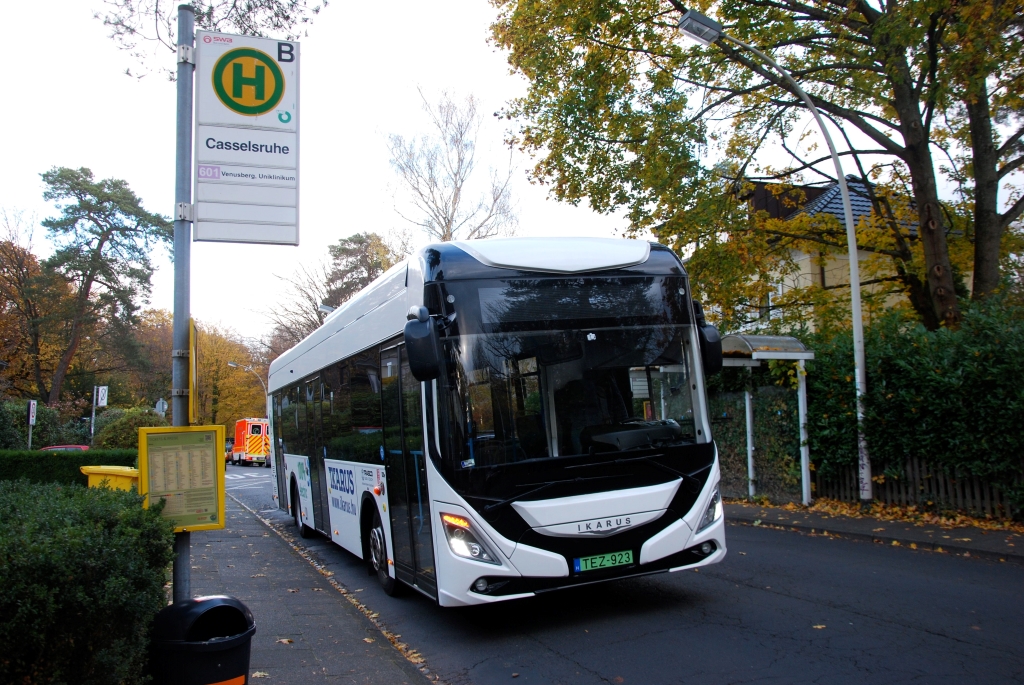
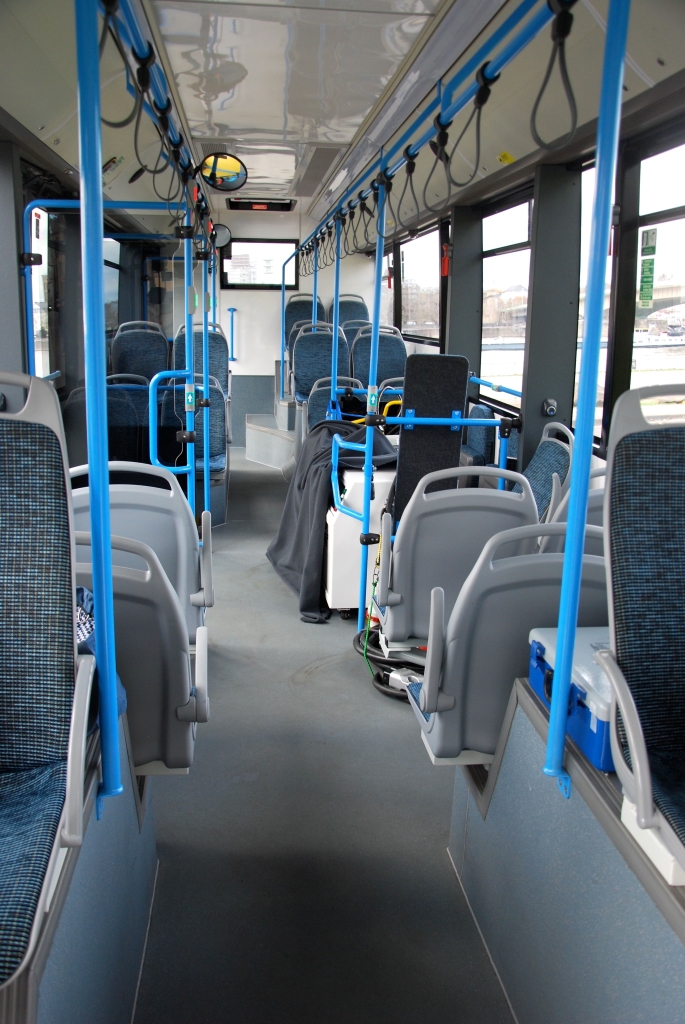
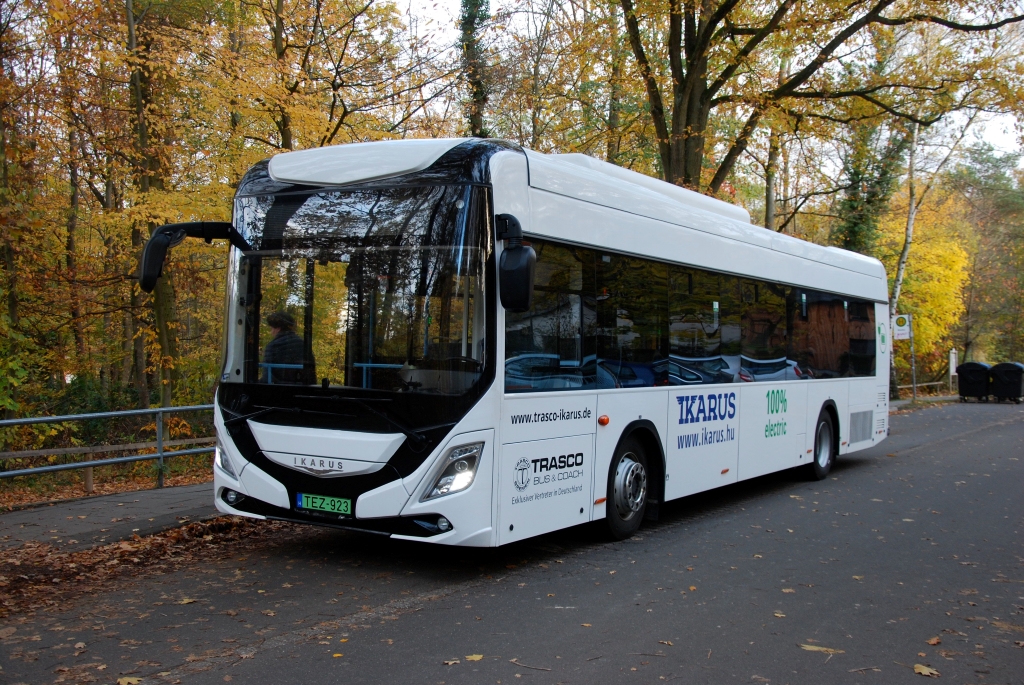


Rear facing seats, not a public favorite. And why, despite all the evolution of technology, we are still occupying the rear and the floor of the bus with bateries, robbing valuable passenger an seat space????